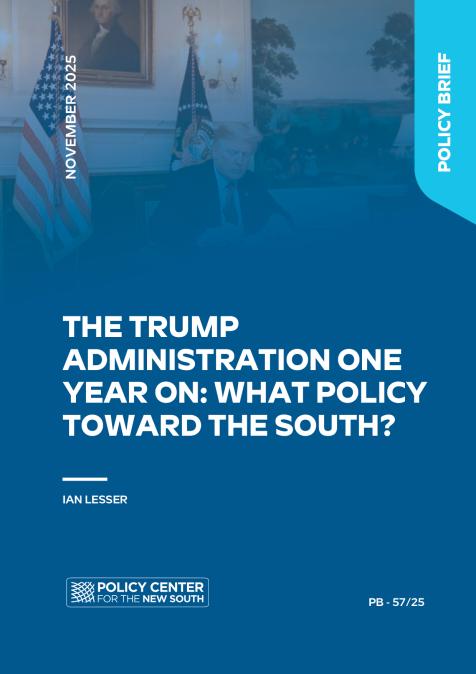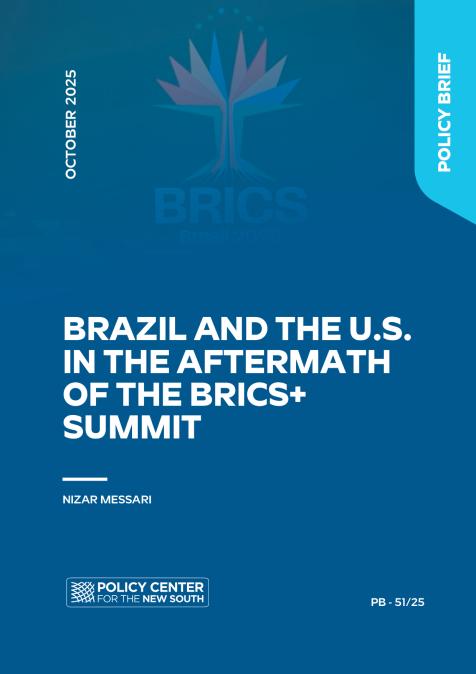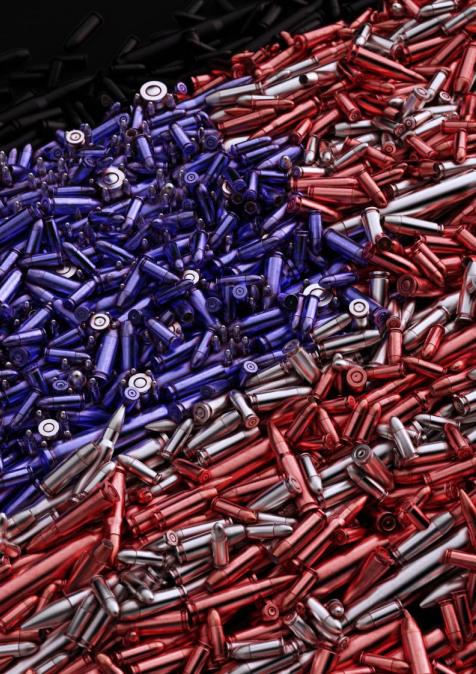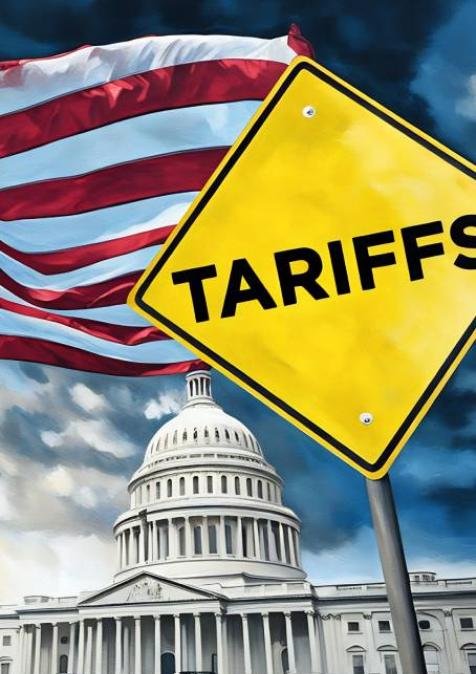Publications /
Opinion
For the President Donald Trump the media are “the enemy of the people”.
Recently, the President posted a fake Time magazine cover online, featuring his portrait under a shadowed crown with the headline: “Long Live the King.” In July 2018, after facing intense media criticism for his meeting with Vladimir Putin in Helsinki, Trump tweeted “The summit with Russia was a great success, except with the real enemy of the people, the Fake News Media.” (Wikipedia – Donald Trump’s conflict with the media). Repeatedly, Trump vilified the press, branding it as “fake news” and the “enemy of the people”.
In a special report titled “The Trump Administration and the Media”, Leonard Downie, former Executive Editor of The Washington Post, catalogued Trump’s attacks on the press, which included calling journalists “dishonest,” “corrupt,” “low life reporters,” “bad people,” “human scum,” and “some of the worst human beings you will ever meet.”
This constant denigration has been a core part of Trump’s strategy. His ongoing insults have damaged public trust in the media, portraying it as an elite institution disconnected from what he defines as true American patriots.
Even before Trump’s campaign of vilification, the media landscape was already in decline. Over the past few decades, thousands of newspapers have folded—pushed out by the rise of social media. Print papers? Abandoned. Newspapers like The Miami News or the Los Angeles Herald are gone for good. Legendary magazines like Look and Life now exist only as museums exhibits.
30,573
The New York Times, without doubt, holds a special place in the heart of the 47th President. Downie quotes Trump’s litany of insults directed at the Times, calling it “fake, phony, nasty, disgraced, dumb, clueless, stupid, failing and dying.”
As recently as March 21, 2025, Trump once again lashed out at The New York Times. In a meeting with White House reporters in the Oval Office, he declared, “They are failing.” Not only that—America’s highest-selling metropolitan print paper, with ten million online readers, is “so dishonest. Their sources are fake. They make all of it up.” Yes, he almost forgot—“they are the enemy of the people.” Those reporters based in Manhattan must be smart, though: The New York Times has been awarded the Pulitzer Prize—the Oscar of journalism—172 times. And yet, not a single writer, editor, or fact checker has been jailed, nor have the Times’ printing presses been dumped into the Hudson River.
The Washington Post, another storied pillar of American journalism, has been owned since 2013 by Amazon founder Jeff Bezos. After Trump’s reelection, Bezos—a pragmatic and shrewd operator—appeared to steer the newspaper in a more conservative direction, aligning more closely with the President. After all, one never quite knows how a narcissist might react if denied royal treatment, unwavering loyalty, or, when necessary, a symbolic bow. Bezos even reportedly contributed around a million dollars for the Republican inauguration festivities.
During Trump’s first term, ending in 2021, the Post assigned a team of fact-checkers who tracked his every word, every figure, every speech and debate. They tallied his falsehoods: 30,573 in total. Trump, no surprise, was not amused. The bet now? Those fact-checkers may soon be out of work.
Chat Call to Moscow
So began the second term of Trump’s presidency. No surprise—despite Bezos’s million-dollar contribution—The Washington Post was denied media access at the Pentagon. They weren’t alone. Other critical outlets such as the National Public Radio, The New York Times, NBC News, The Hill, Politico—were pushed aside and replaced by more conservative voices like Breitbart News, New York Post, American News Network, Newsmax, and the Washington Examiner.
The White House Press Office even expelled reporters from the Associated Press, after AP refused to comply with the President’s latest whim: renaming the Gulf of Mexico the “Golf of America”.
Then the phone rang—someone had dialed the wrong number.
But who was left to stop this arrogance—this homemade cultural revolution? The White House belonged to them. Republicans controlled the Senate, the House of Representatives, and the Supreme Court. Could the Media halt Trump’s march towards authoritarianism? The majority of the press opposed him—but was that enough?
Could the District Judges? The Federal Judges? The Appeal Court?
The answer, perhaps, lay not in the institutions but in the administration’s own incompetence. The sheer inexperience of the new rulers was staggering: 19 members of the administration were recruited directly from the studios of the conservative Fox News.
The new Secretary of Defense? A former Fox News anchor. No experience in government. Never elected to manage even a cow town in Texas or a village of crab fishermen on the Californian coast.
On a fateful day in mid-March, Trump’s top national security advisers were ordered by the White House to join a secret Signal chat, arranged to plan an imminent U.S. attack on Iran-backed Houthie rebel positions in Yemen. Seventeen advisers participated in the call. One Trump aide dialed in from Moscow, another from India.
The Commander-in-Chief of the U.S. Armed Forces—the President—was notably absent. Later, he claimed he hadn’t known about the discussion, conducted entirely on private cell phones. The backlash? In his words a “witch hunt.”
Just Pathetic
An 18th invitee, Jeffrey Goldberg, Editor-in-Chief of The Atlantic, had no idea how he was added. But when his phone rang, he answered—and stayed silent. Unseen, unheard, he observed everything.
Goldberg watched as Trump’s handpicked elite deliberated: Secretary of Foreign Affairs Mario Rubio, Vice President J.D. Vance, and Pentagon Chief Pete Hegseth. The CIA director was there too—unaware that a stranger was listening in, taking notes, quietly snapping photos of their messages.
They even had time to veer off-topic. One exchange revealed just how irritated they were with the Europeans during the Ukraine debates. Their reluctance to take on more responsibility within Nato was, in Pete Hegseth’s words—typed in all caps—PATHETIC.
The same word echoed later, when the Atlantic piece went public and Congressional Democrats responded with outrage. “Pathetic,” some government officials scoffed—aimed not at themselves, but at the critics. La crème de la crème, handpicked by Donald Trump.
Pete Hegseth was quick to respond, claiming that no secret or classified material had been shared regarding military targets in Yemen, and no war plans had been revealed. The real problem, he insisted, was the presence of an “alleged journalist”—a “deceitful and highly discredited” character who, according to Hegseth, made a living by “peddling garbage.”
Yet no one could explain how such a so-called lowlife had ended up in a secure chat discussing U.S. military action—alongside Trump’s top national security advisers. These officials had discussed, in detail, the type of fighter jets that would be used, the timing of the strikes, and even the dropping of bombs.
Goldberg, clearly irritated by the public attacks on national television, published a second article—this time more direct and damning. He detailed exactly what he had seen and read, directly contradicting the denials made by the Secretary of Defense and Trump’s National Security Advisor, a former congressman from Florida.
Once again, Trump and his embarrassed inner circle refused to accept blame for the glaring security lapse. Instead, they turned on the one person who hadn’t even known how he got into the chat in the first place: an editor who, to this day, has no idea who added him—or why.
Can Anyone Stop the News Meltdown?
Fate eventually caught up with The Atlantic. Just a year earlier, on January 30, 2024, the magazine had published a prescient article about the troubling state of journalism in the United States, posing a fundamental question: “Can anyone stop the news meltdown?”
The news industry—battered by the social media revolution and the chaotic pace of the digital age and perhaps soon to be taken over by AI-driven machines—is visibly in decline. Since 2005, an estimated 3,000 of America’s 9000 newspapers have shut down, leaving more than 43,000 journalists unemployed .
Now, The Atlantic itself has been unintentionally thrust into the headlines, its warning ringing louder than ever. “Is American journalism headed toward an extinction-level event?” And, without the power of fearless editorials and rigorous investigative journalism, the follow-up question becomes even more unsettling: Can democracy still function?
As Chris Hedges noted in his report of February 16, 2024, “The consumption of news and entertainment by the public in the digital age”, has turned many of the traditional media platforms into dinosaurs.” And we all know what happened at the end of the Cretaceous period, some 60 million years ago—only a few species survived: turtles, crocodiles, those with thick skins.
According to a 2024 analysis by the polling firm Gallup, the news media ranks as the least trusted among ten U.S. civic and political institutions involved in the democratic process. Despite pledges from news organizations to provide fact-based reporting and ongoing investments aimed at rebuilding public trust, skepticism remains widespread. As Anita Varma noted in The Conversation (January 3, 2025), “mainstream media faces a credibility crisis” that spans the political spectrum.
The Collapse of U.S. Media and the Erosion of Civic Trust
Simon Montlake, writing in the Christian Science Monitor (May 3, 2024), emphasizes that Americans are now navigating a “tsunami of political content.” Digital platforms increasingly dictate how and when people access news—and often steer them away from it entirely, by deprioritizing journalism in algorithmic feeds. This disengagement from news typically goes hand in hand with disengagement from politics, voting, and civic life.
Perhaps most alarmingly, the erosion of a shared news culture may lead to a citizenry “no longer able to engage with one another based on a common set of facts and ideas.”
Democracies rely on informed voters with a basic level of knowledge on which to base their choices. Just 63.9 percent of eligible voters participated in the presidential election of November 2024, and 77.3 million U.S. citizens cast their ballots for a president who combined populism and an authoritarian streak into a cult-like mass movement. The “Make America Great Again” Theory, cultivated by Trump, was questioned and ridiculed by the media, yet their efforts hardly succeeded in dismantling the hallucinating masses—representing almost 50 percent of American voters.
Four in ten Americans today say they have “no confidence” in the media’s news reporting, while only 32 percent express “a great deal” or “fair amount” of confidence. Back in 2003, when Gallup asked the same question, only one in ten expressed “no confidence,” while more than half said they trusted the news.
Distrust in All News Sources
In a 2023 Pew Research Center poll, 32 percent of respondents aged 18-29 said they regularly get their news on TikTok, a platform favoring short, user-generated videos. It is no surprise that Donald Trump is pressuring the Chinese government to sell TikTok’s U.S. operations to an American entrepreneur.
The use of AI to generate vast amounts of news content—including fake images and audio—poses an additional challenge for independent, fact-based news outlets. Online audiences, already struggling with media literacy, are likely to face a surge in AI-generated fake news, further deepening the general distrust toward all sources of information.
“Community newspapers across the United States are dying,” reported Wordpress (July 24, 2018), “slain by a combination of greed, changing public media habits and indifference.” Papers with names like Tucson Daily Planet, Oceanside Blade Tribune Tucson Citizen, Californian Eagle, or Santa Monica Evening Outlook, once took the pulse of small, lost, almost forgotten towns—reporting from their churches, questioning the decisions mayors, sheriffs, undertakers, postmasters, and ranchers living in the shadow of lakes or majestic mountain ranges.
These local journalists captured the rhythm and mood of the nation—idealistic, patriotic, and conservative. They were the connective tissue of American culture in its formative years, documenting small-town life and celebrating traditions: the local rodeo, the branding of cattle, weddings of high school sweethearts. These local reporters documented American life at its roots—newsgathering at the source. They represented everyday Americans: churchgoers, McDonald’s regulars and Budweiser enthusiasts. Idealistic and unpolished, rough around the edges, sometimes uninformed but deeply rooted in their communities.
Democracy Without Journalism
In the early 1970s, I was seated next to a pioneer of journalism, a man connected to the small-town press and, eventually, the owner of The Times, The Sunday Times, and dozens, if not hundreds, of other newspapers—the Canadian-born Baron Roy Thomson of Fleet, one of the great publishers of his time. At a dinner hosted by the German Ambassador Karl Guenther von Hase at his residence on Belgrave Square, London, I was given a private introduction to the fascinating world of community journalism—news flowing through the arteries of Canada and America.
“Move into a small town without a newspaper and start one….soon you will have power, you will earn money through advertisements, and soon you will understand the fundamental strength of democracy,” my neighbor at the dinner table advised. Thomson had bought his first paper, the Timmins Daily Press, four decades earlier, and he never looked back. He remained forever tethered to journalism, always in search of news fit to print. At the time, driverless cars, space exploration, cell phones, and robots were still the stuff of science fiction.
For much of the previous century, writes Simon Montlake in the Christian Science Monitor, “the news worked its way into most Americans’ daily lives either via a newspaper, primarily purchased for sports or weather, or on a TV newscast that was left on between shows.” Today, the internet and the rise of streaming make that kind of casual assumption—the news as an ambient noise—far less likely. “We used to rely on the newspaper industry to introduce new facts into our media ecosystem,” says Victor Pickard, professor of Media Policy at the University of Pennsylvania and author of Democracy without Journalism? Confronting the Misinformation Society. “It is precisely that part of the infrastructure that is disappearing.”
Overall trust in the news media had been falling before Trump’s venomous attacks on the media industry, including CNN and MSNBC. Other public institutions—Congress, democracy in general—have been tainted by skepticism or an extending move toward political extremism on the far right.
A Reckoning Is Underway
Ironically, even as today’s news consumers enjoy unprecedented access to a broad spectrum of information and viewpoints—much of available for free—“many citizens are choosing a daily diet of podcasts, videos, and other digital content that circumvents more serious news altogether, as Simon Montlake reminds us.
“As audiences increasingly embrace online platforms, podcasts, YouTube videos, and other digital sources of information are ascendant,” writes CNN media expert Brian Stelter (November 14, 2024). “News outlets struggle to remain relevant on social media, in-depth investigations are often ignored, while misleading memes get shared millions of times.” Some of these trends have been evident for years, but the election results, believes Stelter, “have put an exclamation point on the concerns about distrust and dissatisfaction with the media status quo. Now a reckoning is underway.
Media executives and rank-and-file reporters are asking the same urgent question: what must change—and what can change—without alienating the loyal audiences they still have? Is there a way forward, or must we face the uncomfortable truth that print journalism is becoming a relic of the past? It is no longer useful to pretend otherwise. As the Christian Science Monitor put it, the classic world of news “has been swept away by an online tsunami of information”.
Half of U.S. adults now get their news, at least in part, from social media. And that has sharply cut into revenues for newspapers and other publishers of news content. In 2006, U.S. newspapers took in $49 billion in advertisement revenues. By 2022, that amount was reduced to less than $10 billion. “Trust in the media has tanked,” insists the Christian Science Monitor. Is the classic form of journalism a thing of the past? “Are we entering a POST-NEWS ERA?”
After three months of turbulent developments in the Trump world, the President—elected with a solid margin and backed by majorities in Congress and the Supreme Court—has intensified his assault on the elites, which, as CNN (March 24,2025) notes, “encompasses almost every aspect of American life.” Trump is escalating his multifront attack on what supporters see as an elite establishment, wielding raw presidential power to reshape government, law, media, public health, foreign policy, education, and even the arts to his will.
Jeffrey Dvorkin, Senior Fellow at Massey College, former director of the Journalism program at the University of Toronto and author of Trusting the News in a Digital Era, is convinced that in the fragmented digital realm, where opinion and amateur video often overshadow evidence-based journalism, expertise no longer carries weight. “Conspiracy theories thrive in such spaces, as does disinformation by Russia and other foreign powers,” Dvorkin explains. This fragmentation has undermined the authority of traditional news sources. “It becomes a kind of rallying point for people to say, ’Well, I don’t trust anybody. I don’t trust governments, I don’t trust the media, the churches and universities. I trust what I feel is important to me.’” They seek ideas and expressions, Dvorkin observes, “that confirm their own feelings rather than inform themselves.”











